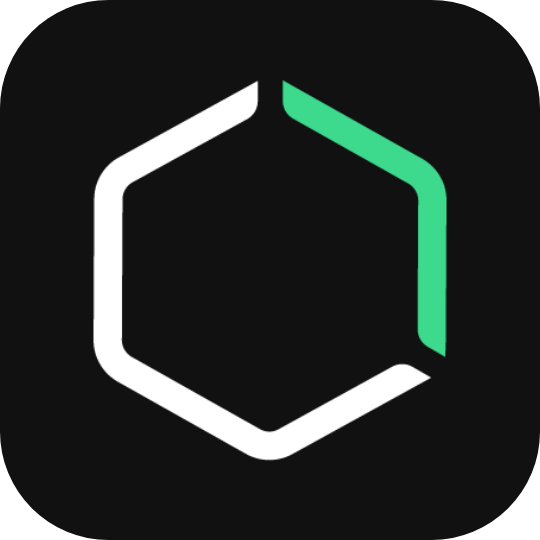In December 2016 we were called 12grapes and made most of our revenues from helping early-stage investors evaluating founder’s teams’ dynamics in a scientific and data-driven way.
Numerous prototypes, tests with customers, a product launch & rebranding and a fundraising round later we moved from a project-based consulting business to a SaaS startup generating growing subscription revenues. We grew from a 3 person team with little to no structure of work to a team of 8 that runs on weekly power sprints with a monthly OKR review structure and an ESOP program. We’ve come a long way and it was a hell of a year!
Q1 2017:
In the first months of the year, it was all about fundraising that we’ve prepared in the last 2 months of 2016. With Atlantic Labs, Makers and Hyperion we’ve gained the best investors we could have for an early seed round. Huge kudos to Jens, Julia, Christophe @Atlantic, Friedrich & Marius + their team @Makers and Sebastian & Hannah @Hyperion. We could not have made it that far without your reliable support and candid feedback.
Learnings: — start fundraising early (6 mo. in advance) because as you might already know: you have to have money to get more money, so don’t wait till your bank balance is in the red — pick the investors that have backed companies that you admire and can learn from, do not choose based on who ever can offer the best price alone, when the going gets tough, it’s the relationship and mutual respect that gets you through it, make sure you pick those guys that you can build this relationship with — have a hiring plan way before you start engaging with investors and start advertising job openings about 3–6 mo before you need to fill them, so that once the cash is in you’re ready to roll.
Q2 2017:
Once we closed our financing round, we switched to “all hands on deck” building prototypes mode. Our target was to find out what a data-driven product could look like to enable companies to build the strongest teams possible. Since we did not have a strong UX or product person on board yet, we had to rely on methodology and a structured approach to UX, as well as hundreds of hours of user testing and customer development interviews, to even come close to the smallest scoped MVP that we could build within 1 month with 2 engineers and 1 designer.
Learnings:
- try Google Venture Sprints from https://www.thesprintbook.com/whenether you have to scope the problem you try to solve and test a vast array of hypothesis quickly, it also empowers everyone on the team to contribute
- UX is not a side-skill of your UI designer, it’s challenge for your product team, that, if resolved, can be the backbone of a strong product that your users will love to use
- be rigorous with your testing routine, always start with a structured approach to any feature or product idea (whether it’s “jobs to be done” or “user stories”) there has to be a discipline on how your team brings in and evaluates new ideas
Q3 2017:
Seven prototypes and a stunt of a very capable freelance UX lead later — thanks, Victoria! we had what felt like a clear idea of which hypotheses we will be testing with the MVP and which feature set corresponds with that. This was also the moment when we onboarded our first paying client (which was only possible because parts of the product were already prebuilt in a Google Venture sprint weeks before that, really highly recommend those!). Most of the groundwork for Bunch.ai and most of the design (including our design library https://styleguide.bunch.ai/) was built in a very impressive and focused 6 weeks period by our exceptional product & engineering team (cannot thank you enough: Britta, Charles, Marija, Sasha, Sam!).
Learnings:
- UX is not a commodity but a result of well structured thinking, extensive testing, awareness of biases and engagement of the whole team in a structured way (and I can really recommend Vic: https://killnicole.github.io)
- Don’t be afraid to climb a mountain that seems WAY to high and take your whole team with you, just tell them what you’re trying to accomplish and more importantly describe the view they’ll have from the top of the mountain and they’ll come with you, no matter how steep the ascent or how many hours it would take them to climb. Being open about the challenges you see will also allow those on your team that is not up for it to make an informed decision of whether this adventure is their cup of tea or not.
Q4 2017:
After launching the product end of August we dived into an intensive period of cleaning up on the product side and growing our efforts on sales & customer success with the growing inbound demand that we’ve received (thanks to producthunt: https://www.producthunt.com/posts/bunch-3 and TechCrunch https://techcrunch.com/2017/08/29/bunch-ai/). Since data is at the core of our company, we could not wait to train our first machine-learning model and accomplished this milestone just recently beginning of December. If you’re interested in finding out what your team’s Slack communication tells about your team’s culture & dynamics, get in touch and we’ll onboard you for a trial.
So far we’ve onboarded customers from the USA, Germany, the UK, the Netherlands and Dubai and are currently preparing our next round of funding.
Learnings:
- know where you are headed, but take one step at a time: we had a spike in inbound requests just right after launch and we’ve handled it with increased manual efforts, before building a more scalable approach to growth and combine automated efforts with manual touch points (that if placed carefully around the automation flows can be highly effective in your B2B customer acquisition efforts), if I were to do this all over again, I’d probably try more approaches to customer acquisition on a small scale before going out with the product in the public to utilize the post-launch traffic even better
- Don’t compromise: If you identified the reason why customers pick your product/service/company over others, don’t compromise on it. If you struggle to deliver it, treat this with highest importance and urgency and ask for help. Help your team members to realize where they struggle and work with open and candid feedback to enable them to deliver better (we made good experiences with the radical candor approach to feedback: https://www.radicalcandor.com/)
- Care about people and care about business: my personal challenge this year has been to balance both. My team knows that I care about them. Sometimes I care so much that it’s not necessarily helping. After a couple of tough moments in the past months, I got one of the best pieces of advice this year from Elina (https://www.linkedin.com/in/elinarazdobarina/) that recommended me to think through and design ways that help me as a leader to communicate with my team that I care about business just as much. I communicate decisions by demonstrating how they would impact our business and our people in a positive way.
Outlook to 2018:
Dear team at Bunch.ai and every single one of our clients: thanks for a grand 2017, I could not be more excited about 2018! We’ll be working super hard to bring even more features to Bunch, amongst others: Slack integration, customized recommendations for team development, benchmarks for company culture and integration with more of your favorite tools and many more. We’re getting ready and thrilled to onboard 10x customers in 2018 and we will be growing our engineering and growth team, so keep an eye on our careers page: https://bunch.ai/career/
Have a peaceful and festive holiday season and a kickass 2018 and keep bunchin’!





